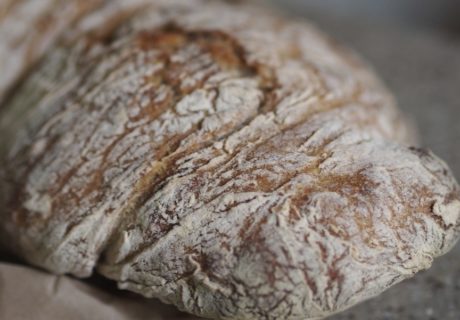The ‘convention’ is that wholegrains should be a major part of our diet and that a small fraction of people, one in 3,000, are intolerant to wheat gluten (coeliac disease).
Every part of this sentence is wrong and I’d like to explain why. Firstly, the wheat you eat today bears little resemblance to the wheat mankind has eaten for thousands of years, and many of us do badly on it.
Coeliac disease, which can be fatal, is on the increase, and affects around one in 100 people. It is vastly under-diag- nosed, with the average length of time to diagnosis being 11 years! The first manifesting symptoms are not uncommonly depression (not all sufferers origi- nally report gut problems) or gastrointestinal cancer, by which time it is often too late. One in ten coeliacs go undiagnosed.
Now the medical journals are finally starting to acknowledge the existence of ‘non-coeliac wheat sensitivity’ which probably affects one in ten people. Common symptoms include bloating and abdominal weight gain, depression, eczema, asthma, aching joints, head- aches, sinus problems, IBS and various digestive problems, carb cravings and chronic fatigue. If you suffer from a few of these you need to take the possibility of wheat intolerance seriously.
The history of wheat
One of the first wheat varieties our ancestors ate, going back to 3300BC, was called ‘einkorn’. Shortly after it began to be cultivated, it mated, so to speak, with ‘goatgrass’ giving rise to a more complex wheat category with a total of 28 chromosomes. In this category we find durum (normally used for pasta) and the ancient grains, known as ‘emmer’ and ‘khorosan’ wheat, now sold under the trademark of Kamut. That is what mankind basically ate for the next few thousand years. For example, einkorn was found in the pharaohs’ tombs, while khorasan was eaten by ancient civilizations in Mesopotamia.
This ancient wheat mated with a grass called Triticum tauschii to form Triticum aestivum, with a total of 42 chromosomes. Examples of wheat known today in this group are spelt, and its close cousin vulgare which is common bread wheat. However, the original bread wheat is fundamentally different to the modern bread wheat you are likely to eat today. The modern wheat has under- gone thousands of hybridisations to increase yield and change the quantity and quality of the gluten content. In just one hybridisation experiment 14 new gluten proteins were identi- fied. Now imagine what the chemical difference is after thousands of hybridisations. The net result is that the gluten proteins are substantially different to those proteins as well as other compounds found in the earliest forms of wheat, such as Kamut (the Kamut trademark is a guarantee that this wheat is 99.9% ancient grain and also exclusively grown organi-cally in much the same way it would have been thousands of years ago).
The gluten-inflammation link
If you are wheat intolerant you are likely to develop inflammatory symptoms. While the prevailing view is that ‘gluten’ is the culprit, I am beginning to revise this simplistic opinion due to an experiment carried out on Kamut. Technically it contains gluten proteins and should therefore promote inflammation. However, it doesn’t. Last month a randomised double-blind study was published on people with IBS carried out by researchers at the University of Florence. The participants were randomly assigned to eating either modern wheat products or Kamut products for six weeks.
During the modern wheat weeks they had no improvement, and continued to suffer from IBS symptoms. However, when they were unknowingly eating Kamut their symptoms got better. They reported significantly less bloating, abdominal pain, irregularity and tiredness. Also, convincingly, markers of inflammation known as pro-inflammatory cytokines, which are usual- ly raised in people with IBS, all reduced. This is exactly the opposite of what one would expect with conventional wheat.
I’m starting to think the main problem with wheat is not gluten or gliadin per se, but the fact that we are eating a food that is considerably different, both genetically and chem- ically, to that which we may have adapted to eat in reasonable quantities. The solution for ‘wheat intolerant’ people may not always be a strict avoidance of wheat and other gluten or gliadin grains, but rather the avoidance of modern wheat.
 By Patrick Holford
By Patrick Holford
Britain’s leading expert and commentator on natural health
Patrick Holford is Britain’s leading thinker and commentator on new approaches to health and nutrition. He is the founder of the Institute for Optimum Nutrition and the author of over 30 books.





